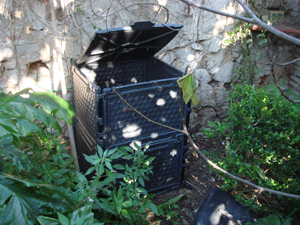The home composter can be in direct contact with the ground or can be found at a base in paved areas or terraces.
In the case of being in contact with the ground, will be good for the composting process because of the nature of microorganisms come in contact with the remains that are deposited on the inside and to allow drainage of excess water from the vegetables. Bear in mind that kitchen scraps contain 70% water. Part of this water is absorbed by the dried leaves to be added, but the rest seeps into the ground very slowly.
When you want to place a garden composter on a stand, will not be available when a land surface. In these cases, the compost has a base which hold the compost and allowing leachate to collect in a container with a liquid collection system located at the base of the composter. Thus, the composter can be placed on any surface, whether paved or terrace, running in an equally correct to base a free composter.
Ensuring that the compost does not receive too much sunlight to avoid having to irrigate. Ideally, the winter was the sun, to avoid too low temperatures that can harm organisms and in summer in the shade, to prevent those same bodies are dying from excessive temperature and that the compost is too dry. The ideal place would be under a deciduous tree or on a terrace with a decorative plant that will provide enough shade in the compost.
It takes between 50 cm and 1 m of space on the sides to extract the compost with ease.

